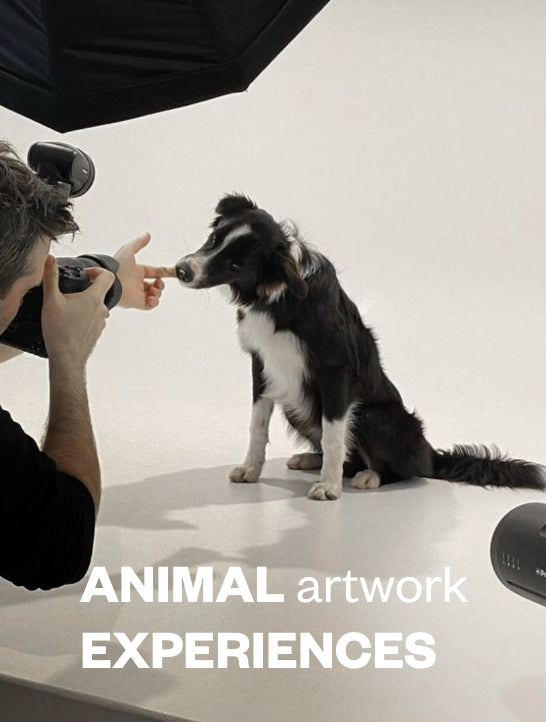Ever been curious about what makes the dachshund dog breed so irresistibly charming to many? This breed really shines, not just because of its unique look but also for its lively and spunky character. Originating from Germany with a history intertwined with hunting badgers, their design is as intentional as it is curious - long bodies perfect for tunneling into dens. Yet beyond this hunter's exterior lies a companion full of affection, intelligence, and perhaps a bit of stubbornness.
Their popularity isn't unwarranted; after all, who could resist that charming face? But owning one comes with responsibilities tailored to their unique needs. From understanding the importance of regular exercise despite their small size to navigating potential health issues specific to the breed such as disc damage or ear infections - there's much more than meets the eye when caring for these little warriors.
Table Of Contents:
- Exploring the Dachshund Dog Breed
- Varieties of Dachshunds: Long Haired and Miniature
- Caring for Your Dachshund: Health and Grooming Tips
- Feeding Your Dachshund: Nutritional Guidelines
- Understanding Dachshund Dog Behaviour and Training Needs
- Choosing Your Dachshund dog: Adoption and Breeder Information
- Conclusion
Exploring the Dachshund Dog Breed
Dachshunds, affectionately known as wiener dogs or sausage dogs, are a beloved dog breed that has captured hearts worldwide. But there's more to these adorable pups than meets the eye.
Let's dive into the fascinating history and unique physical attributes of the dachshund dog.
Understanding the Dachshund's Origin
The Dachshund dog, a breed that has etched its way into the hearts of many with its distinctive silhouette and spirited personality, boasts an origin as intriguing as its appearance. This unique dog breed finds its roots deeply embedded in Germany, where it was meticulously developed over centuries to excel in a specific task: hunting badgers underground. The very name 'Dachshund' offers a nod to this heritage, translating from German to 'badger dog' ('Dachs' meaning badger; 'Hund' meaning dog).
Tracing back to the 15th century, early versions of the Dachshund were being bred for their prowess in tracking and tunneling after game such as foxes and rabbits. However, it wasn't until the 17th century that their breeding was fine-tuned with an emphasis on creating a fearless hunter capable of excavating badgers from their dens. Their elongated bodies allow them ease of movement through tight burrows while their robust legs provide digging power unmatched by other breeds.
It's fascinating how these dogs were not only selected for physical attributes conducive to subterranean hunts but also for traits like courage and tenacity necessary for confronting formidable adversaries beneath the earth’s surface.
By the 19th century, Dachshunds had begun endearing themselves beyond hunters’ circles into family homes across Europe due largely to Queen Victoria’s fondness for them which helped popularise the breed significantly in England. Concurrently adapting beyond just hunters’ companions or pets within noble circles during this period saw dachshunds emerging onto competitive show scenes whilst also evolving varieties such as Miniature Dachshunds suited more towards companion roles than rigorous fieldwork.
As they transitioned into beloved household pets worldwide throughout subsequent years—largely thanks to both American soldiers returning home post-World War II who brought these captivating canines overseas along with European immigrants—their versatile nature shone through not just in physical capabilities but also varied coat types (smooth-haired), colors/patterns presenting further appeal diversification amongst enthusiasts globally even today.
Thusly originating from meticulous development aimed at specialized hunting tasks within Germanic terrains emerges now what we recognize affectionately across continents: A charismatic yet contemplative character embodying resilience alongside remarkable adaptability - encapsulating indeed much more than initially meets eye underpinning rich lineage tracing centuries past.
Recognising Dachshund Physical Characteristics
The breed standard for dachshunds is quite specific. They have an elongated body, short legs, and a bold, intelligent expression.
Some key physical characteristics of dachshunds include:
- Long, muscular body
- Short, stubby legs
- Long, narrow head
- Floppy ears
- Deep chest
Varieties of Dachshunds: Long Haired and Miniature
Did you know that dachshunds come in different coat types and sizes? Let's explore the distinct features of long haired and miniature dachshunds.
Distinct Features of Long Haired Dachshunds
Longhaired dachshunds have a sleek, slightly wavy coat that requires regular brushing. They can come in the same colors as smooth dachshunds.
'I'm amazed at the variety of colours, the coats, the textures, the personalities,' Lay said. 'And they can all come from the same litter.'
Characteristics of Miniature Dachshunds
Miniature dachshunds are, as the name suggests, smaller than standard dachshunds. They typically weigh 11 pounds or less.
Despite their size difference, miniature dachshunds share the same coat types and personality traits as their larger counterparts.
Caring for Your Dachshund: Health and Grooming Tips
Dachshunds are generally a healthy breed, but like all dogs, they have some health concerns to watch out for. Here's what you need to know.
Common Health Issues in Dachshunds
The Dachshund dog, with their distinctive long bodies and short legs, are not only known for their unique appearance but also for certain health issues that are somewhat common within the breed. These conditions can range from those related to their skeletal structure to others affecting different parts of their body.
One of the most well-known health concerns in Dachshunds is Intervertebral Disc Disease (IVDD). This condition arises due to the degeneration of one or more intervertebral discs in the spine, which can lead to pain, reduced mobility, or even paralysis. The Dachshund's elongated spine makes them particularly susceptible to this ailment. Regular exercise and maintaining a healthy weight can help manage this risk; however, owners should be mindful about activities that put excessive strain on their backs.
Obesity is another significant concern for the Dachshund dog. Due to their small stature and propensity for gaining weight easily, they require carefully managed diets and regular physical activity. Excess weight puts additional stress on the spine as well as joints leading potentially exacerbating conditions like IVDD.
Dental disease also poses a threat largely because small breeds tend to be predisposed towards periodontal problems compared against larger dogs. Routine dental care including brushing teeth alongside professional cleanings when necessary becomes paramount ensuring overall health maintenance avoiding complications stemming oral neglect such infections spreading systemic through bloodstream affecting organs beyond just mouth itself.
Progressive Retinal Atrophy (PRA), an eye disorder resulting in gradual vision loss leading ultimately blindness over time affects some dachshunds albeit less commonly than aforementioned issues yet remains important consideration especially since early detection might aid management albeit cure doesn’t exist currently PRA specifically genetic therefore breeding practices emphasizing testing prior reproducing vital reducing prevalence future generations considerably importantly raising awareness amongst potential new dog parents regard inherent risks associated breed’s charming physique serves crucial step fostering better informed community committed welfare these endearing companions effectively mitigating impacts inheritable diseases whenever possible thus ensuring lives filled with much joy love mutual respect shared between humans four-legged friends alike navigating together challenges come way supporting each other every step journey.
Grooming Essentials for Long-Haired Dachshunds
Grooming dachshunds, especially long-haired varieties, is crucial for their health and comfort. Brush them daily to prevent matting and keep their coat shiny.
Pay extra attention to areas prone to tangles, like behind the ears and under the legs.
Feeding Your Dachshund: Nutritional Guidelines
Proper nutrition is key to keeping your dachshund healthy and happy. But what exactly should you feed them?
Ideal Diet for a Healthy Dachshund Dog
Crafting the ideal diet for a Dachshund involves striking a balance between providing enough energy for their active lifestyle while avoiding overfeeding, which could lead to obesity and its associated health risks. A well-considered nutritional plan supports not only their general health but also addresses breed-specific concerns.
Balanced Nutrition: At the core of a healthy diet for Dachshunds is balanced nutrition that includes proteins, carbohydrates, fats, vitamins, and minerals in appropriate proportions. High-quality animal protein should be at the forefront to support muscle maintenance and overall body function. Carbohydrates provide energy; however, they should come from whole grains or vegetables to ensure they are digestible and beneficial.
Controlled Caloric Intake: Given their propensity towards weight gain due partly to their short stature combined with an enthusiastic appetite managing caloric intake becomes paramount Preventing obesity through careful monitoring portion sizes feeding schedules helps mitigate risks related back problems joint issues maintaining lean body mass critical ensuring longevity vitality throughout lifespan this spirited breed
Dietary Supplements: While comprehensive commercially available dog foods generally meet most dietary needs certain supplements might enhance dachshund’s wellbeing For instance omega fatty acids found fish oil flaxseed can promote healthier skin coat glucosamine chondroitin sulfate often recommended supporting joint especially older dogs predisposed conditions like IVDD These additions however always discussed veterinarian before incorporating into regime ensure safety efficacy individual pet’s context
Special Considerations Age Activity Level: The nutritional requirements vary significantly across different life stages puppyhood adulthood senior years Likewise activity level impacts how much food required sedentary dachsunds will need fewer calories than those more active lifestyles Adjustments made accordingly personalised approach best tailoring meal plans suit evolving alongside physical demands placed upon them during various phases existence within household dynamic
Avoid Human Food Snacks: Although tempting share scraps table many human foods unhealthy even dangerous pets Foods high fat sugar salt content cause gastrointestinal upset worse Toxic items chocolate onions garlic strictly off-limits understanding safe vs unsafe snacks crucial part responsible ownership educating family members same important prevent accidental ingestion harmful substances
Fresh Water Availability: Last but certainly least access fresh clean water must never overlooked essential component any proper dietary regimen Ensuring your has constant supply drink whenever thirsty plays role digestion metabolism temperature regulation among myriad other physiological processes underlying good Staying hydrated especially hot weather after exercise vital preventing dehydration related complications Thus complementing solid foundation sound principles provision ample fresh water completes picture holistic nourishment aimed optimising welfare cherished companion
Feeding Quantities and Schedules
The amount you feed your dachshund will depend on their age, size, and activity level. As a general rule, adult dachshunds need about 1/2 to 1 1/2 cups of dry food per day, divided into two meals.
Puppies and nursing mothers may require more frequent feedings. Always consult with your vet to determine the best feeding schedule for your individual dog.
Understanding Dachshund Dog Behaviour and Training Needs
Dachshunds are known for their lively, affectionate personalities. But they can also be stubborn and independent at times.
Dachshund Dog Temperament
The Dachshund dog, with its unmistakable silhouette and spirited disposition, exhibits a temperament full of contrasts and complexities that endear them to many. Known for their bravery, intelligence, and playful nature, these dogs pack a lot of personality into a small frame. Understanding the multifaceted temperament of the Dachshund dog is key to appreciating this breed fully.
Brave and Tenacious: Originally bred for hunting badgers underground, Dachshunds possess an innate bravery that far exceeds their modest size. This tenacity makes them fearless companions but can sometimes translate into stubbornness in training sessions or when they are determined to follow a scent or pursue prey due to their strong hunting instincts.
Loyal Companions: Loyalty runs deep in the Dachshund's veins; they form incredibly close bonds with their owners. Their devotion means they often choose one person in the household as their favorite but will show affection towards all family members if socialised properly from an early age.
Vigilant Watchdogs: Despite being classified as hounds rather than traditional guard dogs, the dachshund dog exhibits remarkable vigilance making excellent watchdogs They’re quick alert any unusual activity within surroundings using surprisingly loud bark given diminutive stature Though not aggressive by nature protective instincts may surface presence strangers other animals until familiarised demonstrating underlying cautious aspect demeanour alongside more outgoing traits
Intelligent Yet Independent: Intelligence shines through problem-solving abilities curious exploration world around However independence streak sometimes seen refusal obey commands particularly if find something more interesting focus attention It’s essential incorporate positive reinforcement patience training techniques engage cooperation effectively managing blend smarts self-direction characteristic breed
Playful Affectionate: A life-loving spirit infuses every day interactions These delightful creatures love play whether tossing ball chasing butterflies yard equally content curl up lap enjoying quiet moments closeness Being inherently sociable enjoy company humans canine peers alike thrive environment where mental physical stimulation plentiful ensuring remain engaged happy
Sensitive Nature: Beneath robust exterior lies sensitive soul responds negatively harsh treatment criticism Positive gentle approach recommended dealing potential behavioral issues understanding sensitivity helps strengthen bond between pet owner fostering mutual respect admiration partnership navigating challenges joys together journey lifelong friendship commitment
Effective Training Strategies for Dachshunds
Training a dachshund requires patience, consistency, and positive reinforcement. Start socialisation and obedience training early to prevent behaviour issues down the road.
Dachshunds respond well to reward-based training methods like clicker training and treat rewards. Keep training sessions short and fun to hold their attention.
Choosing Your Dachshund dog: Adoption and Breeder Information
So you've decided a dachshund is the right dog for you. Congratulations. So, now's the moment to find that dream home you've been searching for.
Adopting a Dachshund dog: What You Need to Know
Adopting a dachshund from a rescue organisation or shelter is a great way to give a deserving dog a forever home. When considering adoption, keep in mind:
- Dachshunds in rescues may have behaviour or health issues that need addressing
- Older dachshunds may already be housetrained and have some obedience skills
- Adoption fees typically cover initial vet care, spay/neuter, and microchipping
Selecting a Reputable Dachshund Dog Breeder
Now, if you're leaning towards getting a dachshund puppy from a breeder, make sure to put in some legwork and track down one who's really committed to their pups' well-being and ethics. Look for breeders who:
- Health test their breeding dogs for genetic conditions
- Raise puppies in a clean, nurturing environment
- Provide a written contract and health guarantee
- Allow you to visit their facility and meet the parents
Avoid breeders who always have puppies available, sell to pet stores, or refuse to answer your questions. A good breeder will want to make sure their puppies are going to loving, forever homes.
Dachshunds, with their long bodies and short legs, were bred for hunting. They come in various sizes and coat types but share common health concerns like spinal issues. Regular grooming, especially for long-haired ones, is crucial. Feeding them a balanced diet tailored to their needs keeps them healthy. Despite being playful and loyal, dachshunds can be stubborn; effective training involves patience and positive reinforcement. When looking to welcome one into your home, consider adoption or carefully select a reputable breeder.
Conclusion
In exploring the world of the dachshund dog breed we've journeyed far beyond mere appearances. These dogs aren't just adorable; they're complex beings requiring dedicated care matched only by the love they give in return. They remind us daily that good things do come in small packages - or more aptly put here - elongated ones.
Diving headfirst into life alongside your sausage-shaped friend will bring challenges but remember each obstacle overcomes strengthens your bond further still making every moment spent together priceless memories carved forevermore both our lives are richer thanks simply sharing them together.











